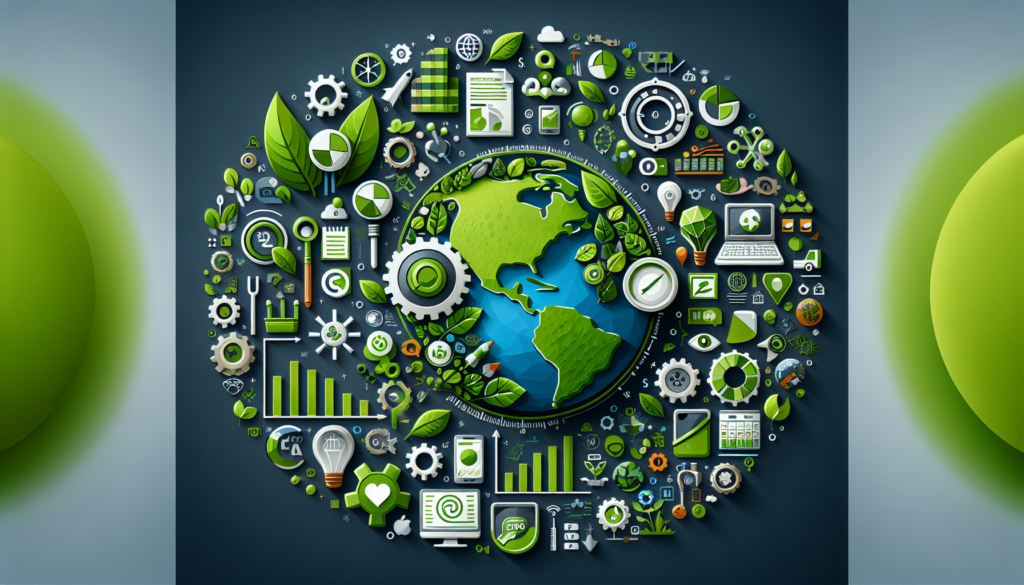In an era where corporate value is measured as much by financial performance as by environmental and social responsibility, understanding the intersection between sustainability and digital marketing is essential for organizations seeking to maintain a competitive edge while fostering a positive impact. This article dives into the core of current trends and sustainability-driven digital marketing strategies, addressing advanced technical innovations and evaluating case studies that exemplify how theories transform into beneficial practices for both businesses and the environment.
Incorporating Sustainability into Digital Marketing
Strategies Based on Rigorous Data
Life Cycle Analysis in Digital Campaigns: Forward-thinking businesses are embracing life cycle analysis (LCA) to assess the environmental impact of their digital marketing campaigns. By employing quantitative data collected during campaign phases, from conception and design to execution and withdrawal, LCA offers a holistic view that allows for the identification of opportunities to optimize efficiency and reduce the carbon footprint.
Efficient Use of Resources and Renewable Energies
Green Hosting: Choosing an internet service provider (hosting) that uses renewable energies and has a policy committed to reducing environmental impact is a fundamental decision for the sustainability of digital marketing. These providers often have certifications that corroborate their commitment to sustainable practices.
Data Compression: Optimizing images and multimedia content to consume less data not only improves loading speed and user experience but also reduces the energy demand of data centers, contributing to a lower carbon emissions.
Content Optimization and SEO Strategies
Sustainable SEO: This methodology focuses on maximizing energy efficiency and reducing the ecological footprint through the optimization of content for search engines. The use of more efficient keywords and higher-quality content that responds to user intent can decrease the need for repeated searches and inefficient traffic.
Responsible and Programmatic Advertising
Transparency and Honesty in Advertising: Green advertising is that which avoids greenwashing, providing truthful and transparent information about products and the company’s supply chain. This practice is not only ethically correct but also strengthens consumer trust and loyalty.
Efficient Programmatic Advertising: Artificial intelligence and machine learning are enabling programmatic advertising to become more efficient by targeting ads to specific audiences with unprecedented precision, reducing the waste of impressions and improving return on investment (ROI).
Precise Impact Measurement and Sustainable KPIs
Environmental KPIs: Businesses are beginning to include environmental KPIs in their marketing dashboards, such as CO2 emissions per click or energy expended per conversion. These metrics allow for continuous assessment and improvement of the environmental impact of marketing strategies.
Innovation and Emerging Technologies in Sustainable Marketing
Blockchain and Supply Chain Transparency
Blockchain is becoming a key tool for increasing transparency in supply chains. By tracking the provenance and eco-friendly handling of products, brands can demonstrate their commitment to sustainable practices and inspire confidence in digital consumers.
Artificial Intelligence for Energy Efficiency
AI is helping companies to predict consumer behavior and adjust their marketing strategies accordingly, thereby minimizing the carbon footprint by avoiding overproduction and distribution of unwanted content.
Case Studies and Real-World Applications
Comparing theory and practice, this article explores specific case studies where the integration of sustainability into digital marketing has generated tangible results. Companies like Patagonia and Ecosia are pioneers in the use of green marketing strategies and the application of technologies that favor sustainable practices, demonstrating the potential of these strategies to generate competitive advantage without compromising environmental values.
Patagonia: This outdoor brand has established a marketing model based on environmental responsibility, using digital platforms to share its message of sustainability and protection of nature. Their efforts to be transparent about sustainability practices have resonated with their audience and strengthened their position in the market.
Ecosia: As a web browser that uses its revenues to plant trees, Ecosia is showing how digital tools can be part of the solution to climate change. Through its digital marketing, it continuously communicates its positive impact, earning the loyalty of users who value sustainability.
Projections and Future Directions in Digital Green Marketing
The future of sustainable digital marketing looks promising, with more innovations on the way. The widespread adoption of 5G promises revolutions in data efficiency and the implementation of the internet of things (IoT) can provide opportunities for even more personalized and energy-efficient marketing. Additionally, the emergence of virtual reality (VR) and augmented reality (AR) could transform the user experience while reducing the need for physical materials and the associated environmental impact.
With sustainability as an imperative, digital marketing must continue to adapt and evolve to meet the demands of a planet that requires urgent action. Companies that anticipate and embrace these trends will not only be contributing to environmental well-being but will also position themselves as ethical leaders in the minds of increasingly aware and demanding consumers. This article offers a detailed starting point for those seeking to incorporate sustainability strategies into their digital marketing, and invites reflection and ongoing innovation in this vital space.

